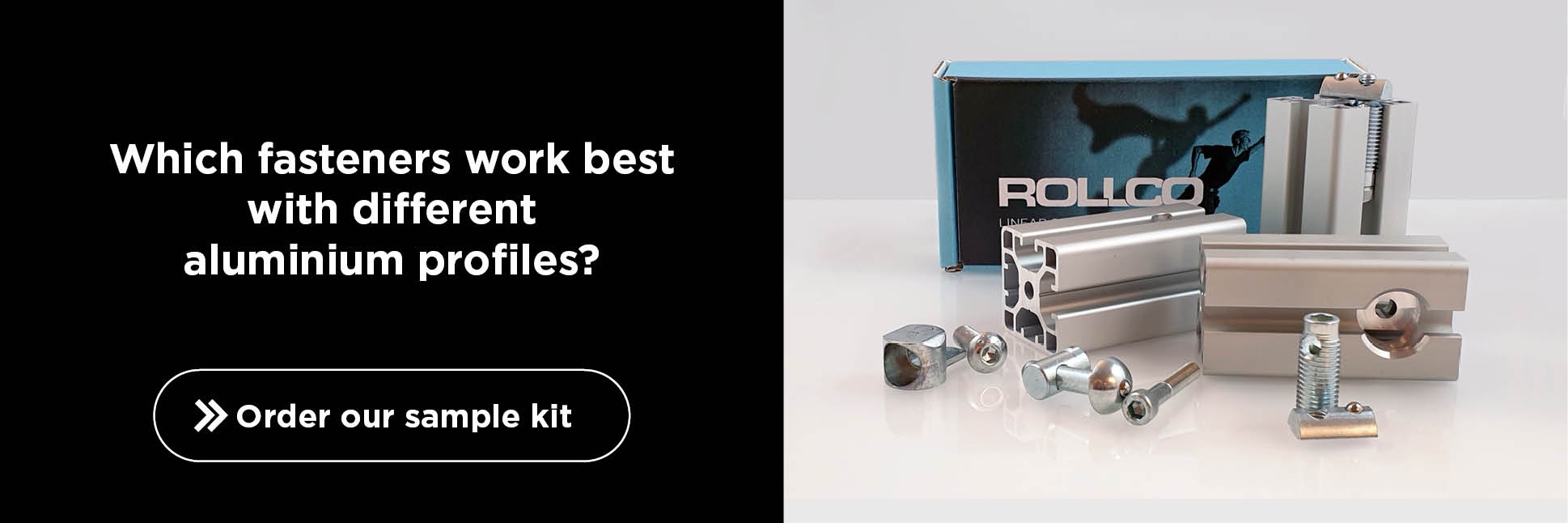While building an aluminium profile structure, it is easy to get confused when selecting fasteners. Which one suits what, and what advantages and disadvantages do they have? We asked our sales representative David Hirvonen to clarify the issues..jpg?width=658&height=439&name=_77A4881%20(alu-standard).jpg)
Four types of fasteners for aluminium profile constructions
There are a few different types of fasteners, but here we focus on the four most common: Standard, Central, Universal and Automatic.
– They all have their pros and cons, depending on the purpose of your aluminium construction and what budget you have, says David.
The standard fastener is simple
– This is one of the most common fasteners. It is also one of the simplest and strongest options. Since it is hidden in the slot, it is well-suited if you plan to use any disc material. It resists heavy vibrations and is often used to build frames or frames for machines. The disadvantage is that it requires machining of the aluminium profile because you need to take up holes and threads. It also only handles right angles.
Central fastener is discreet but sensitive to vibration
– Just like the standard fastener, the central fastener is simple. It is well suited for, for example, machine protection because it is easy to put sheet material all around. In addition, it is completely hidden, which makes it a good choice if you have profiles with covered sides and want the result to be smooth and neat.
An advantage compared to the standard fastener is that it is not completely fixed.
– The central fastener only requires processing of one of the aluminium profiles and can thus be partially adjusted afterwards.
In terms of price, it is between the standard fastener and the universal fastener.
– The disadvantage of the central fastener is that it cannot handle heavier loads and is more sensitive to vibrations. It is well suited for machine protection and can absorb the forces it may be exposed to, but it performs worse in applications where vibrations occur.
The universal fastener is strong
– Universal is by far the strongest fastener. It is often used for tripods of various types and can handle heavy movements. It is the most suitable option when you need to build an aluminium construction with a suspended load. The universal fastener also requires processing, but only in one of the profiles. It is easy to assemble and is always used in pairs. Otherwise, it risks breaking.
Automatic fastener is flexible
– The advantage of the automatic fastener is that no processing of the profile is required. All needed for assembly are two Allen keys. It is quick and easy, which makes it a great option, when you are, for example, building an aluminium structure out on-site. It is also a suitable choice if you need to add something to an existing system.
Often, it is used as a complement to the other fasteners because it is slightly more expensive. The main advantage, however, is flexibility.
– If, for example, you start building a workbench but are unsure how it should look, it is possible to change it afterwards. As you do not process the profiles, you do not have to start from scratch if you want to change the construction in the meantime.

